Brazil Landmarks Drawing Brazil Christ Drawing Easy
Cascading waterfalls, giant sand dunes and crystal clear waters – this is Brazil. Here are the most famous Brazil landmarks that you cannot miss on your next trip.
Time to start planning your next adventure.
Brazil is a straight up spectacular country and boasts some of the most impressive natural landscapes on the planet.
Christ the Redeemer, Fernando de Noronha… Brazil's famous landmarks are really something special.
These are the ones that you shouldn't miss.
1. Iguazu Falls
The Iguazu Falls (or Iguaçu Falls in Brazilian Portuguese) are a beautiful set of waterfalls on the Iguazu River at the meeting point of Brazil, Paraguay and Argentina and should be at the top of your South America bucket list.
The thundering of millions of litres of water cascading down and crashing into the Iguazu river is a sound that you'll never forget.
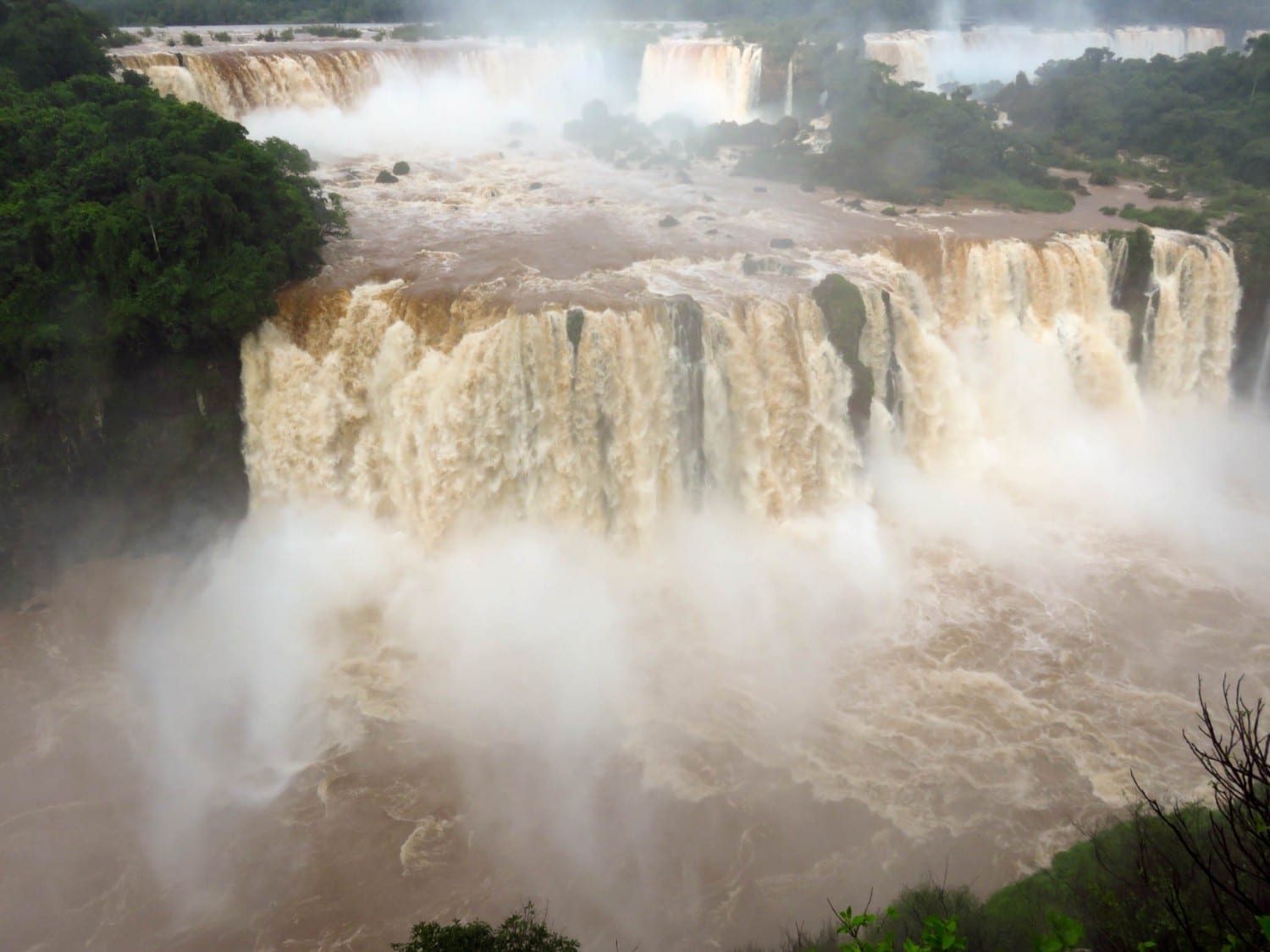
The first time I saw the falls, I remember being just as entranced by the sound as I was by the sight – it's nature at its most powerful.
So what makes Iguazu Falls so special? Why are they one of the iconic Brazilian landmarks?
Well, for starters, the falls are 2.7km wide and are actually made up of 275 separate waterfalls, making them largest waterfall system in the world. The longest drop is 82 metres long.
The falls, which were voted as one of the New Seven Natural Wonders of the World, can be seen from different perspectives, with catwalks and bridges criss-crossing the edges to give you every possible vantage point.
There's even a special viewing tower to look down on them from.
You can explore the Falls from either the Brazilian or Argentinean side (or both!).
Believe it or not, there was a five year gap between me visiting the Argentinean and Brazilian side of the falls, but when I did make it to the Brazilian side, I wished I'd done it sooner. It's got the best panoramas of the falls hands-down..
PS, when you visit the falls, make sure that you have a waterproof layer of clothing as you can get pretty wet from some of the viewing points make sure you pack what you need to wear in the Amazon rainforest.
2. Christ the Redeemer
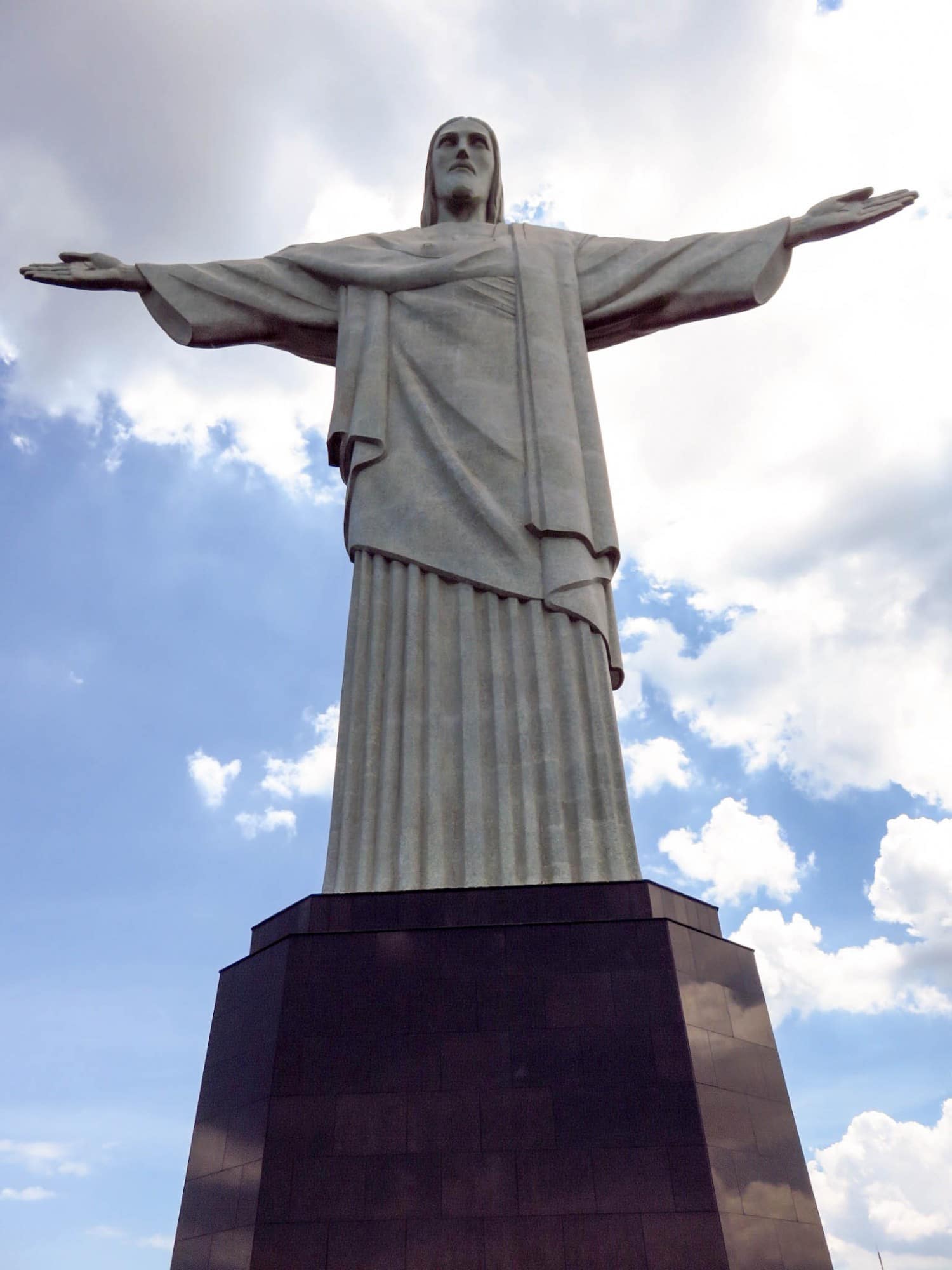
You can't miss Christ the Redeemer in Rio de Janeiro. It's one of the iconic Brazil monuments and the most famous statue in the country.
The grand statue of Jesus Christ sits at the top of the 700 metre-high Mount Corcovado in the Tijuca Forest National Park, towering over the city – an ever-present and striking feature on Rio de Janeiro's skyline.
Christ the Redeemer is not only a striking icon, it's also one of the most important historical monuments in Brazil. Built in 1931, the statue itself is 30 metres tall, with its arms alone spanning 28 metres.
The 8 metre base beneath the statue is also a chapel (and very popular for weddings).
So what else do you need to know? Christ the Redeemer is the world's largest art-deco statue and one of the New Seven Wonders of the World.
No visit to Rio is complete without a journey to the base of the statue – adventurous folk can hike up to the top from the city.
Be warned though, it's a pretty steep and strenuous hike – only do it if you feel comfortable that you're fit enough for it.
If that's not quite your cup of tea, or all sounds a bit too much like hard work, you can grab a taxi, minibus or tram to the top: either way, the views are well worth the effort.
3. Sugar Loaf Mountain/ Pao de Azucar
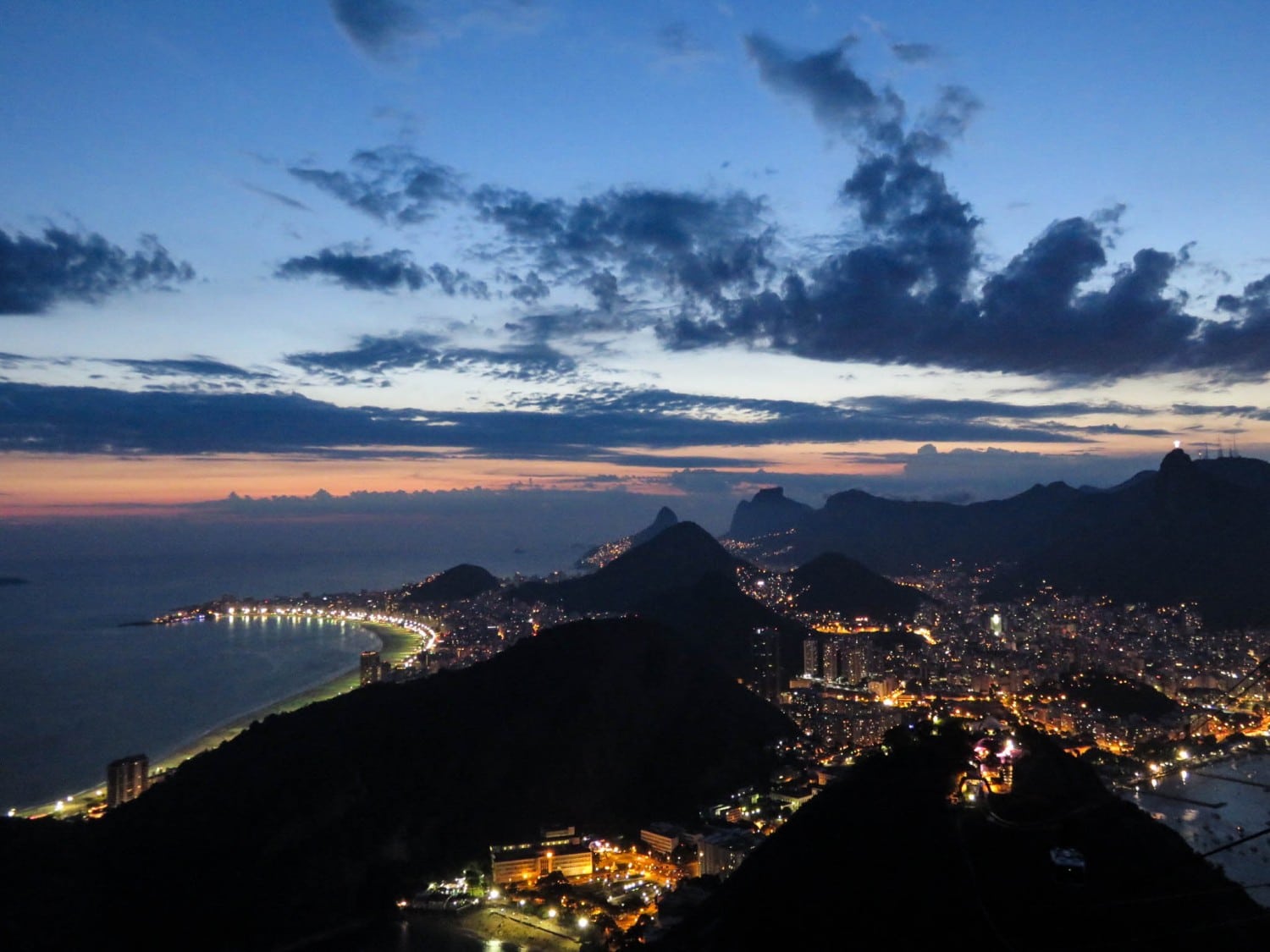
The Sugar Loaf Mountain (Pao de Azucar) is a peak in Rio de Janeiro and another of Brazil's iconic landmarks.
Rising 396m from the mouth of Guanabara Bay, you can spy the mountain from all around the city.
Take a cable-car ride up to the top for breathtaking 360-degree views of the city and the surrounding beaches, mountains, forests and sea.
Bring your camera – you're going to need it – I've hunted out many a viewing point in Rio de Janeiro and none come close to the one from the top of the Sugarloaf Mountain. You'll even get a great view of the Christ the Redeemer statue.
Looking for something extra special?
I'd definitely recommend going up the mountain in the early evening to watch the sun set over the city and to see the Christ the Redeemer Statue beautifully lit up.
4. Ipanema Beach
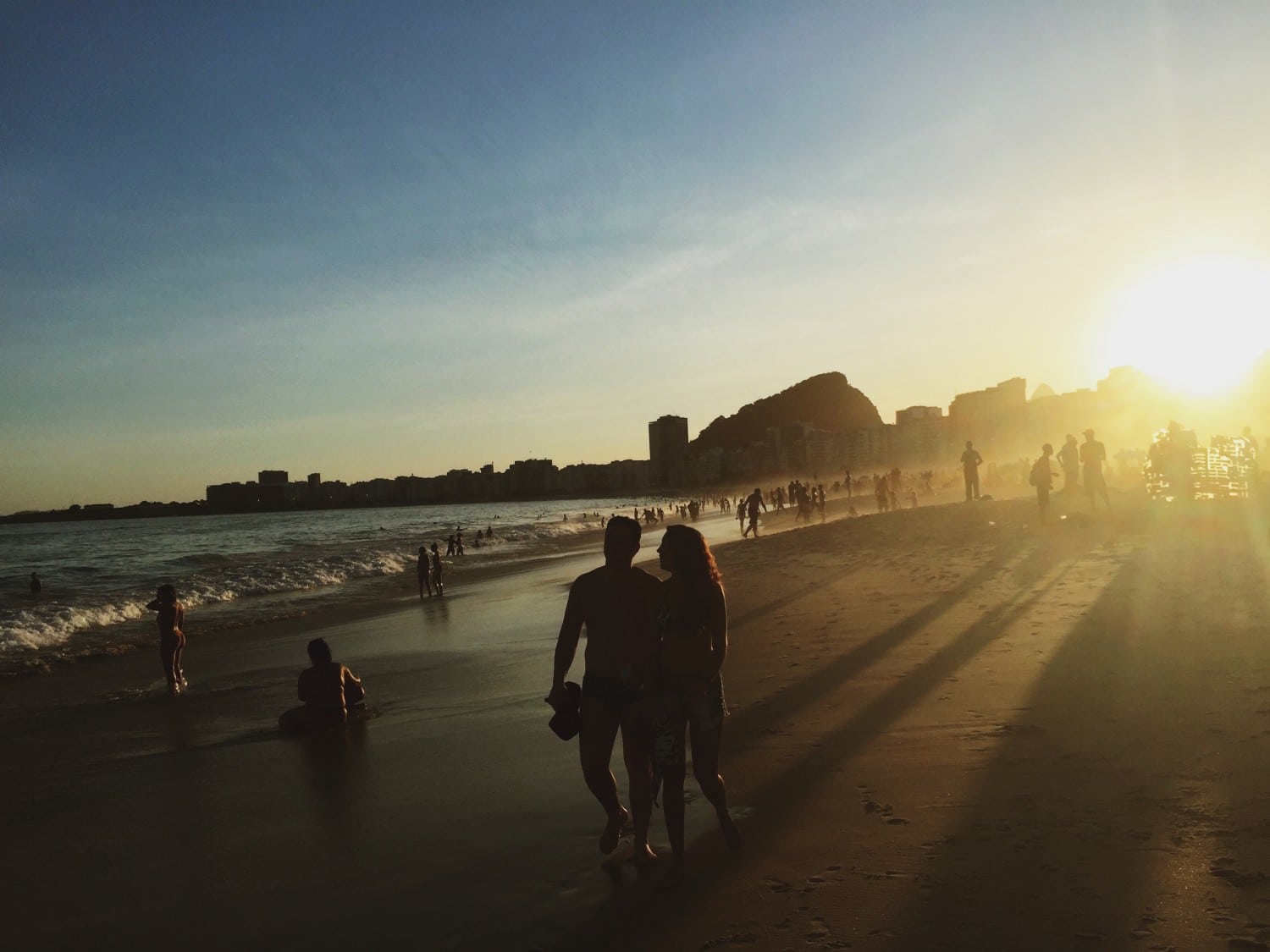
Does Ipanema Beach even need an introduction? I'm guessing not, but I'll give you one anyway.
A chic city beach in Rio de Janeiro, tucked between Arpoador Beach and Leblon Beach, Ipanema is undoubtedly one of the most famous Brazilian landmarks.
The beach's biggest claim to fame is the song "The Girl from Ipanema", which Brazilian writer João Gilberto wrote in a nearby cafe after spying a beautiful woman on the beach.
While its musical heritage lives on, Ipanema Beach is also known as the 'Little Paris' of Rio – thanks to the fashionable shops, restaurants, avant-garde galleries, luxury hotels and apartments that line the promenade and surrounding area from which it takes its name.
Pack your beach bag and spend a day on the powdery sands, before settling in with a caipirinha to watch sunset – Ipanema's one of the best places to watch the sun setting over the city.
5. Lençóis Maranhenses National Park
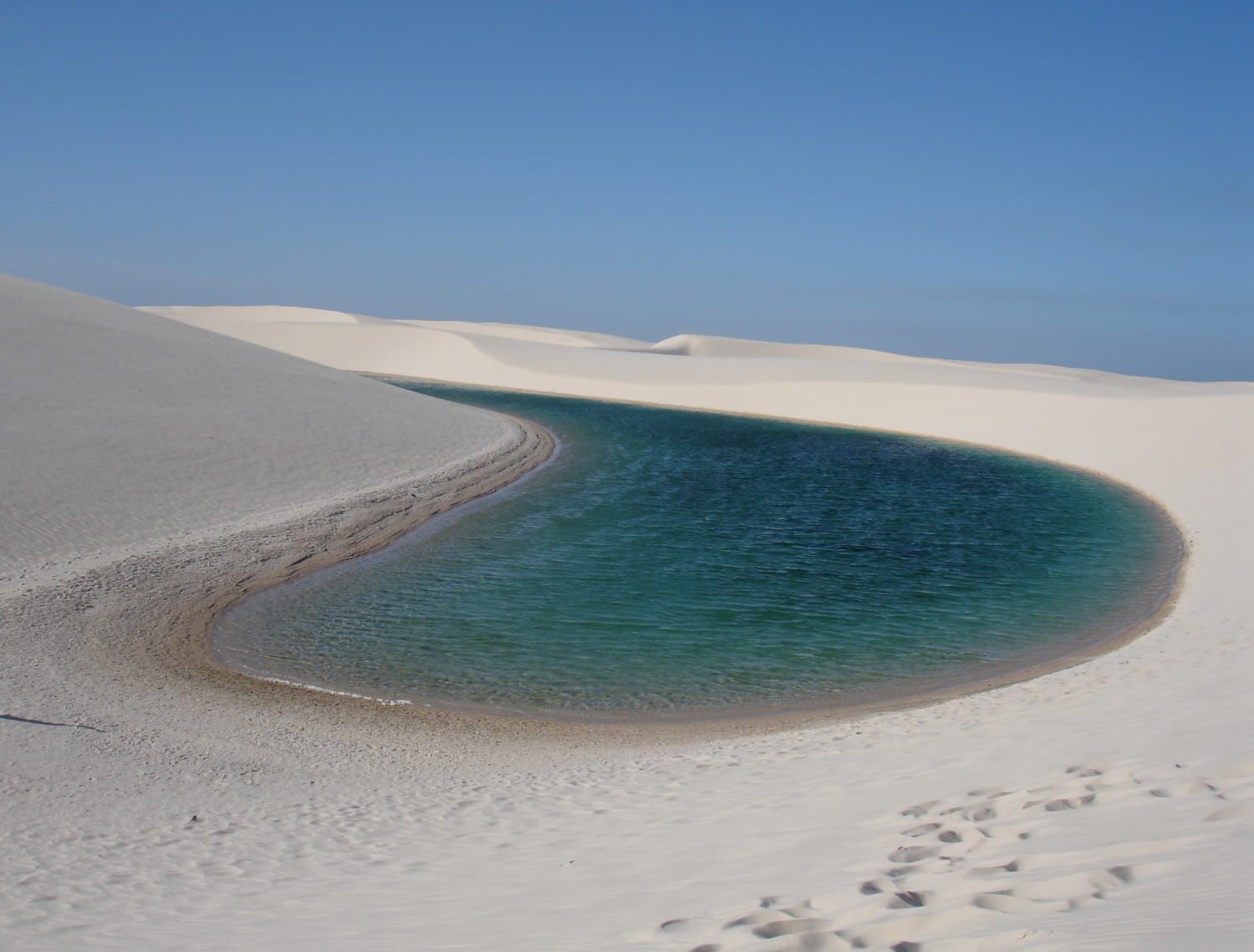
The Lençóis Maranhenses National Park is a truly arresting sight and one of Brazil's landmarks that can sometimes get a little overlooked.
So what is it exactly?
The Lençóis Maranhenses National Park is a vast area of white sand dunes, stretching over an area of roughly 1,500 km2.
Although it looks like a desert, it is actually too wet to be considered a desert in the true sense of the world – but that's part of its appeal.
For half of the year from January to June, the National Park witnesses torrential rainstorms.
As a result, pools of rainwater collect in the valleys between the dunes and turn into thousands of beautiful blue, green and black lagoons that can reach over 90 metres long and 3 metres deep.
The result is a stark contrast between the miles of pale white sands and jewel-coloured lakes and one of the most spectacular sights in Brazil.
6. Fernando de Noronha
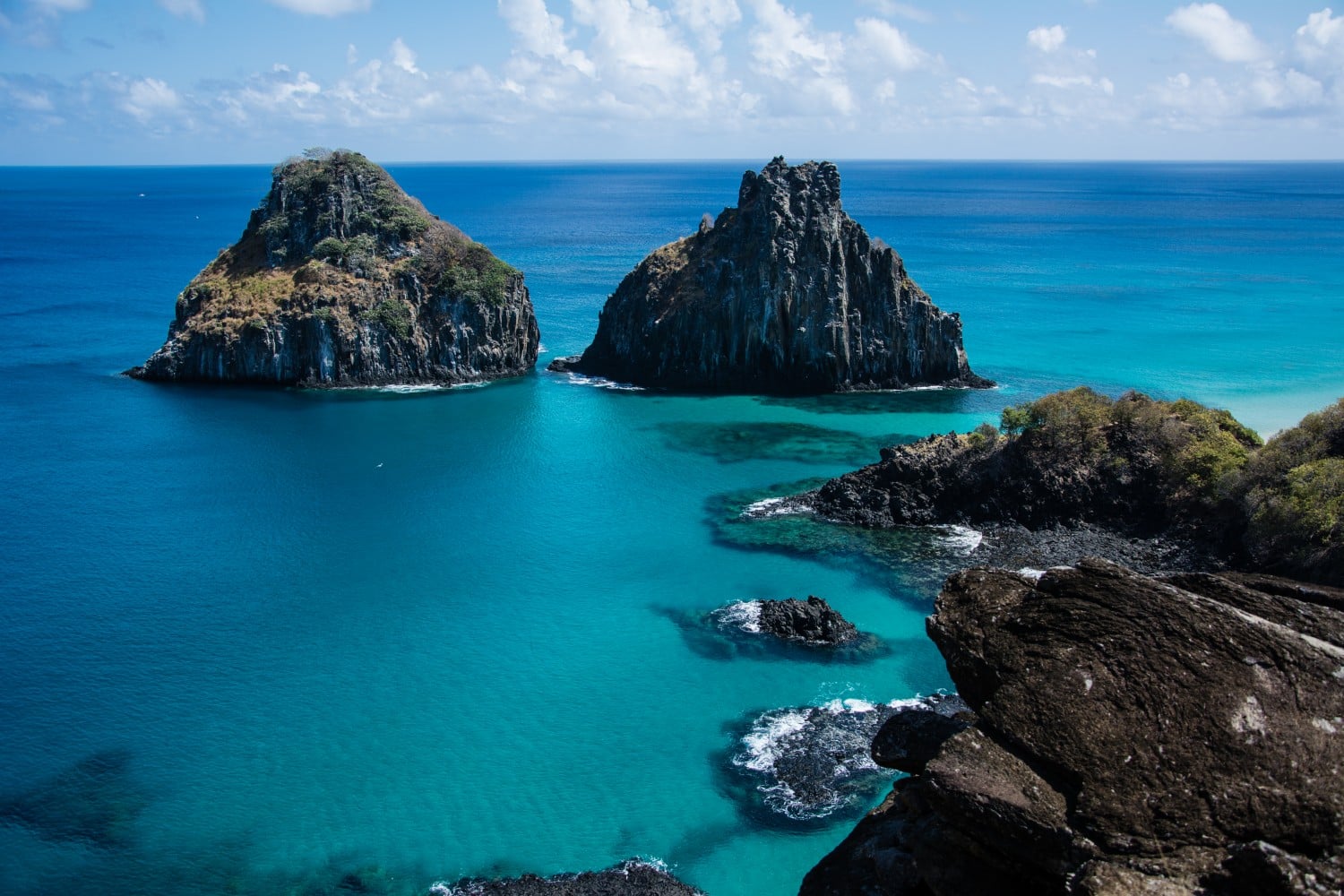
Imagine a beach with pale white sand, softer than you thought possible and framed by picture-perfect cerulean water.
Now imagine a number of islands filled with beaches just like that and you'll come close to picturing Fernando de Noronha.
Fernando de Noronha is an archipelago of 21 islands in the Atlantic Ocean, 354 kilometres from the coast of Brazil. It is famous for its pristine white beaches and fabulous landscapes of ridges, coves and lush vegetation.
Not only does the archipelego form one of the Brazil's most striking natural wonders, the wildlife is also a sight to behold.
The island is home to one of the biggest sea-bird breeding colonies in the Southern Atlantic, and you can also find manta rays, moray eels, sea turtles and dolphins gliding in its waters.
It should come as no surprise that Fernando de Noronha is a diver's paradise, but even if you prefer to stay above water – the beaches and laid-back island lifestyle are worth the trip alone.
7. Meeting of the Waters
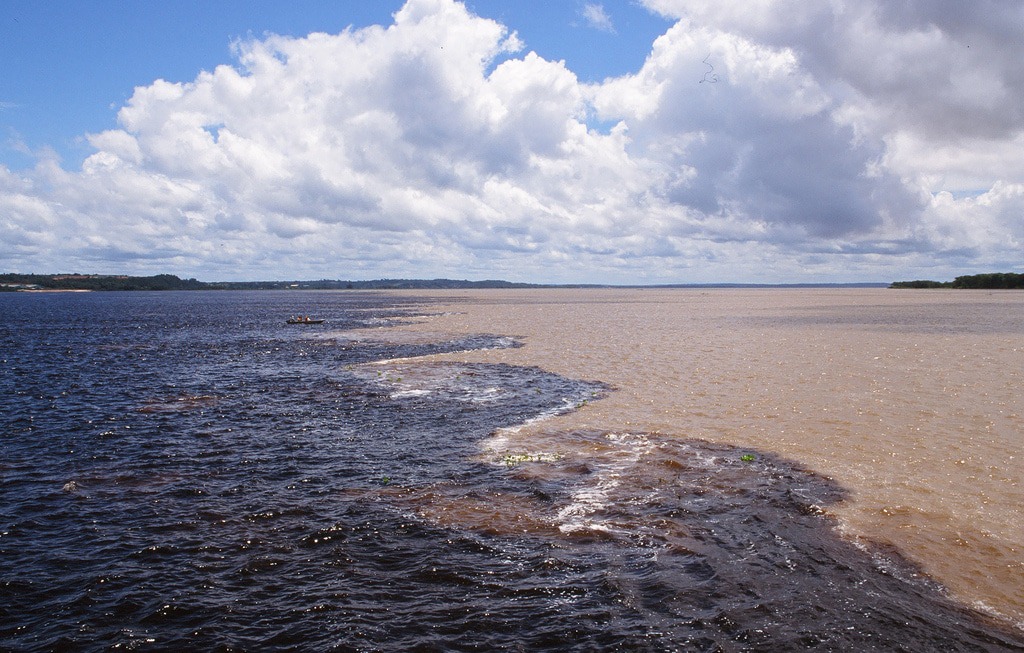
Sometimes mother nature pulls out the stops – few things are more intriguing and striking than the natural phenomena known as the meeting of the waters.
What is the meeting of the waters and why is it such an important landmark?
Two rivers: the River Solimões and the River Negro meet in the Amazon and flow side by side without converging for over six km – a sight that's clearly visible to the eye thanks to their different colours.
The Solimões River, the lighter river, owes its colour to sediment of sand, mud and silt, while the Rio Negro, the darker river, gets its colour from decayed and dissolved plant and leaves.
The differing densities and temperatures of the water result in this incredible spectacle: one river split into two striking halves.
After flowing side by side for six kilometres, the rivers eventually converge in an area of fast-moving water and together become part of the Lower Amazon River.
8. Ouro Preto
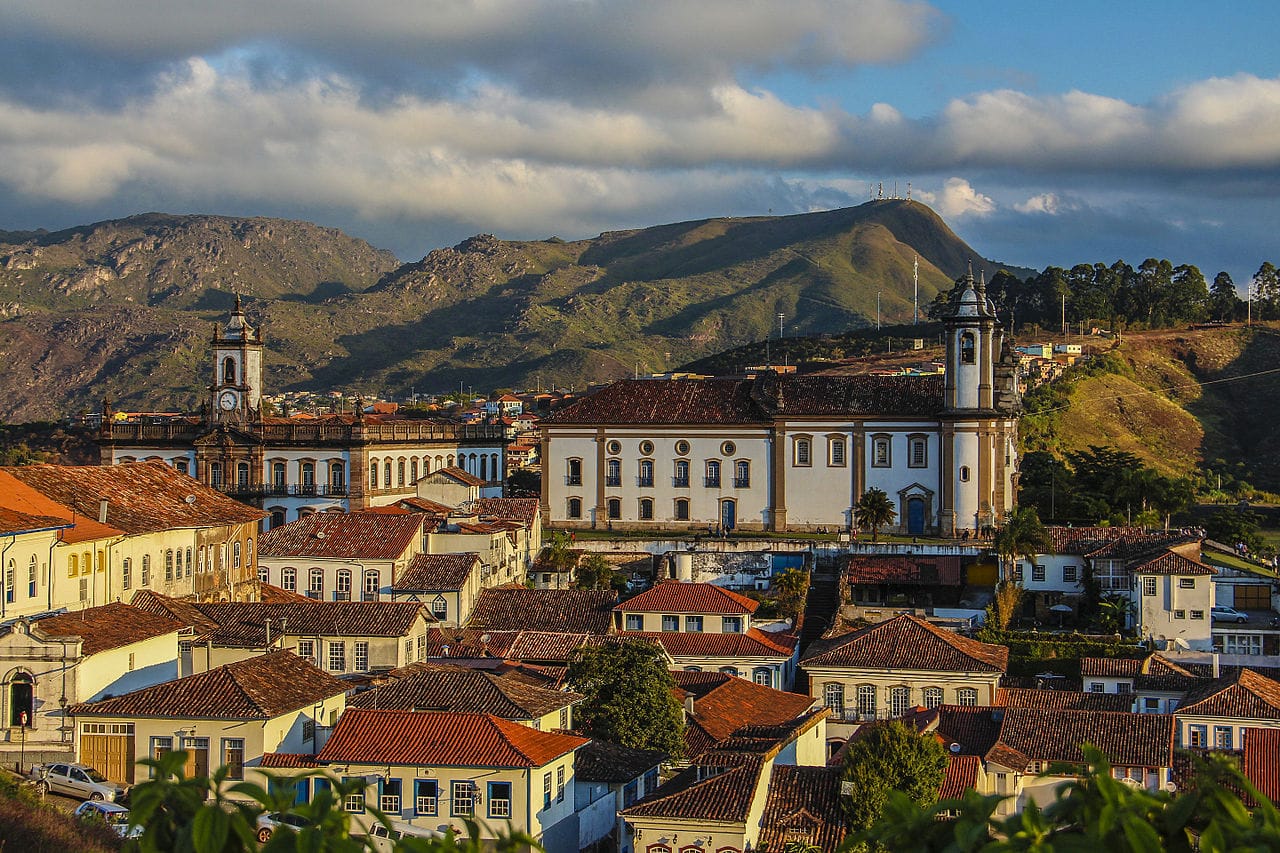
Brazil is filled with gorgeous colonial-era towns, but Ouro Preto wins out for sheer beauty – it's often refrenced as a living historical monument in Brazil.
Ouro Preto is a historic mining town, built at the feet of the Serra do Espinhaço mountains.
Known for its baroque architecture, including bridges, churches, fountains and squares, it's been recognised as a UNESCO World Heritage Site.
I dare you to walk between the prettier-than-you-thought-possible buildings and not fall just the teensiest bit in love with it.
Walking up the cobbled streets can be tiring. Don't let your legs get the best of you!
If you make it to the top of the hills, you'll be rewarded with a panoramic view of the town's 23 churches, including the 18th Century-built St Francis of Assisi.
In addition to the architecture, Ouro Preto is home to beautiful mineiro art (art from the Mina Gerais region in which the town is located), including some of renowned artist Aleijadinho's best pieces.
9. Brasilia Cathedral
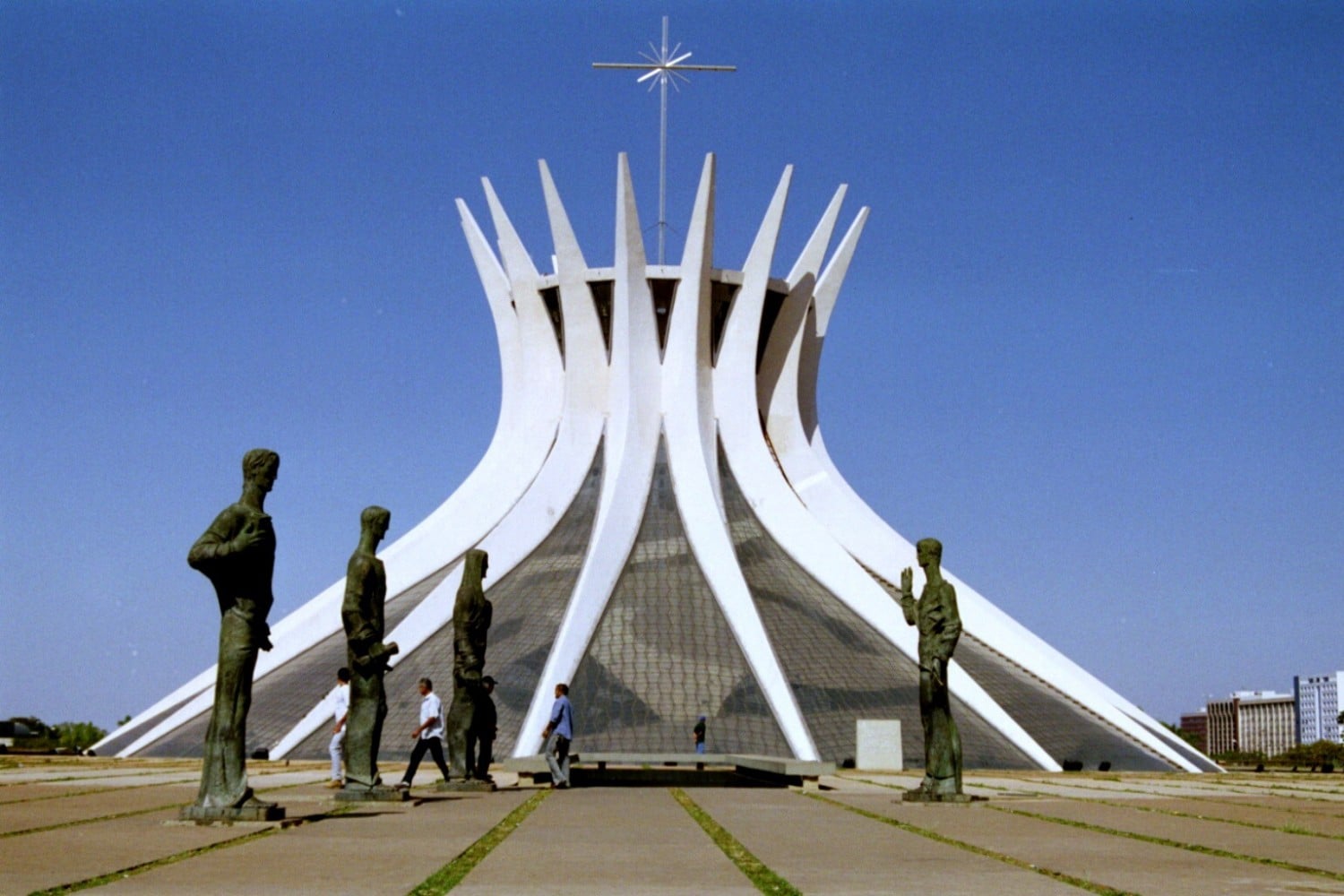
Strikingly futuristic, even today, Brasilia's Cathedral is a testament to the modern vision architect Oscar Niemeyer had when designing Brazil's capital city (no, the capital is NOT Rio).
The cathedral's full name is the Metropolitan Cathedral of Our Lady of Aparecida and is the Roman-Catholic Cathedral serving Brazil.
Built in 1970, the Cathedral is a hyperboloid structure made from 16 concrete columns that weigh 90 tonnes each, topped with a glass roof.
Niemeyer's interesting design is modelled on hands reaching up towards heaven.
Nearly 1 million visitors grace the cathedral's door per year, so not only is it one of the most famous landmarks in Brazil, it's also one of its most visited. Don't miss it off your South America itinerary.
10. Copacabana Beach
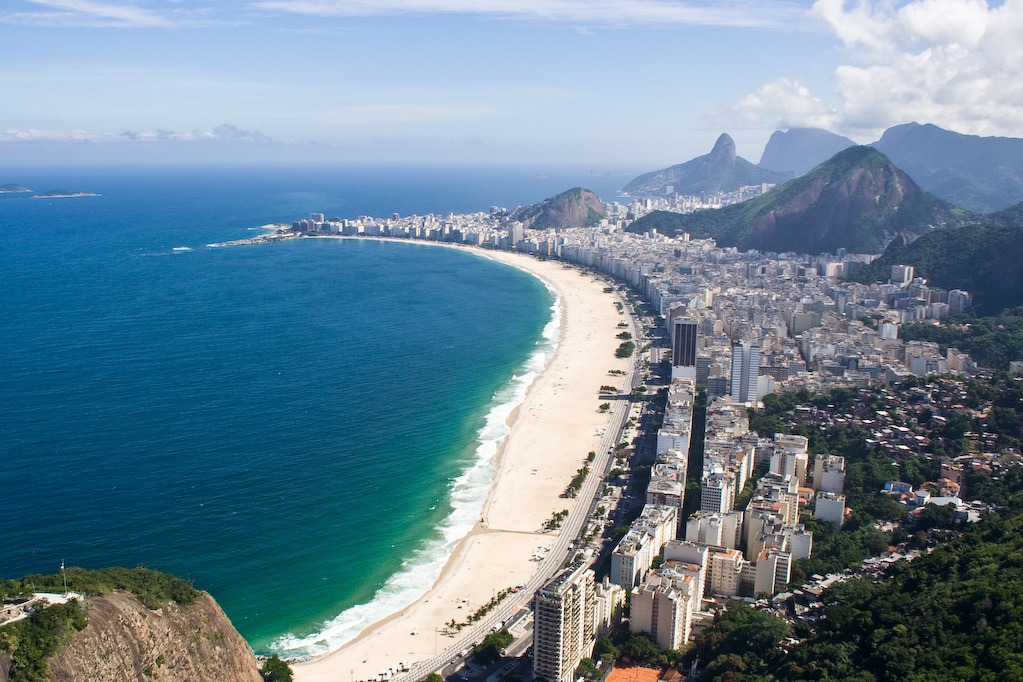
Copacabana, along with it's other Rio counterpart, Ipanema, is one of the most famous beaches in the world.
The four kilometre-long crescent-shaped beach is perfect for sunbathing and swimming and is lined with hot-spot shops, bars, restaurants and hotels.
To top this, the views from the beach are incredible, with the Sugar Loaf Mountain to the left and the old Copacabana Fort to the right.
And if you ever get bored of the views (highly unlikely), sit back and watch one of the many football games taking place on along the beach – the locals love it!
Read more about why Rio should be at the top of any South American travel itinerary.
11. Ilha Grande and Parrot Peak
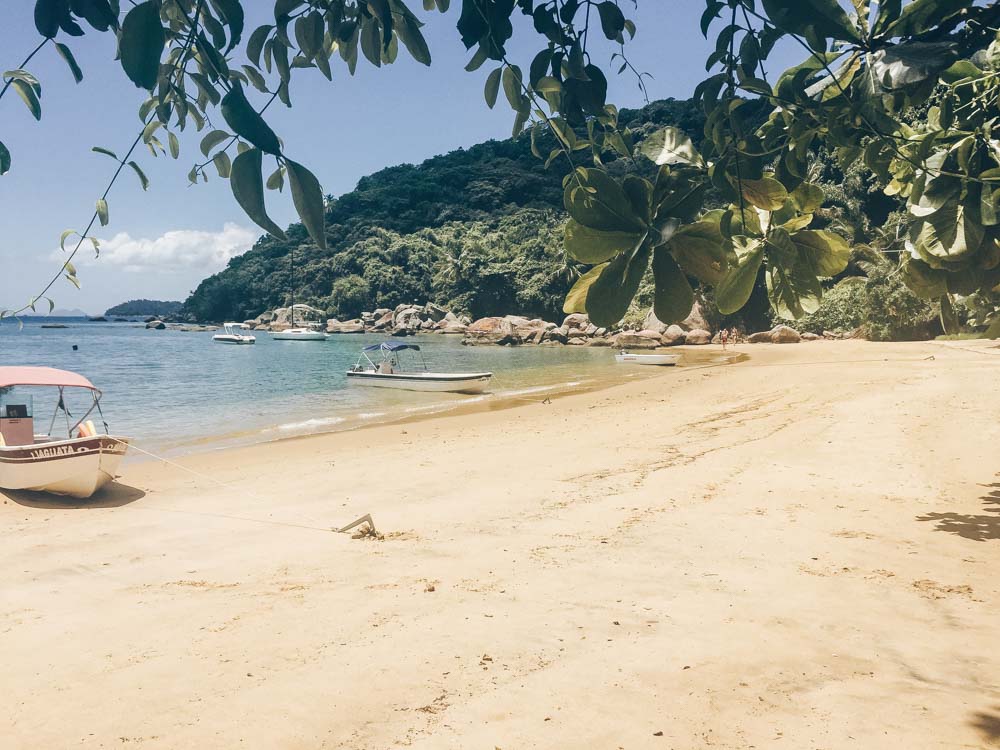
Ilha Grande is a beautiful Brazilian island, located 150 kilometres from Rio de Janeiro.
It's hard to choose which of it's beaches, small towns and beautful hikes should count as one of the best landmarks in Brazil, so I've chosen the whole island instead.
Ilha Grande is full of stunning beaches, but the winner of them all has to be Lopes Mendes. To give you an idea of how beautiful this beach is, I'll let you in on a little secret and say that it was voted one of the Top 10 Beaches in the World by Vogue Magazine. Exactly.
Whether you want to beach-hop around the island, snorkel, or dive at Sitio Forte, there is something for everyone! If hiking is your thing, there are 13 trails on the island for you to choose from.
I recommend Parrot Peak – a short but strenuous hike in the forest that leads to the top of the parrot-shaped rock formation that towers above the island.
Do the hike in the dark (bring a torch) and watch the sunrise over Ilha Grande and the surrounding bay for a memorable (and slightly smug) start to your day.
12. Teatro Amazonas
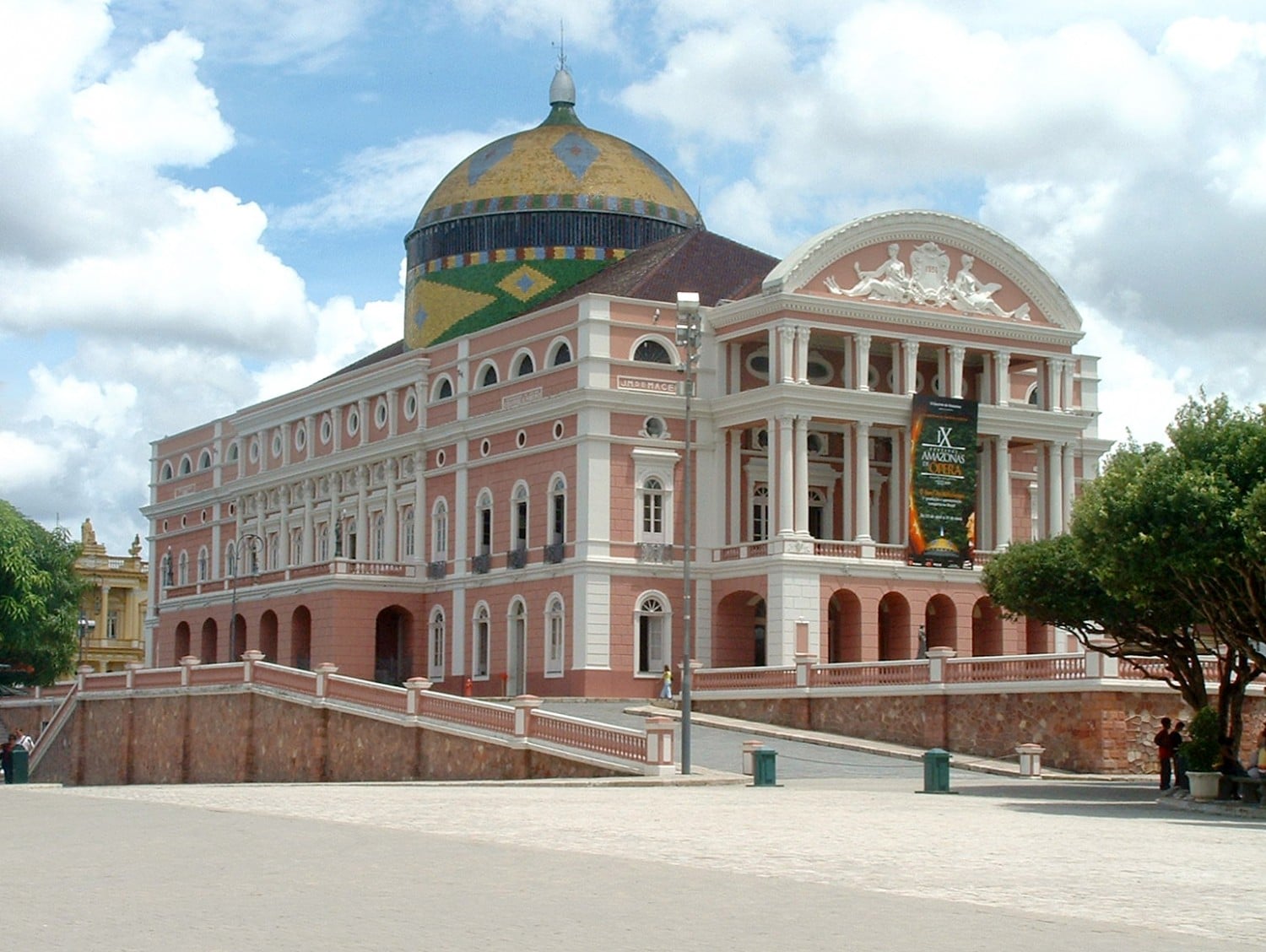
The Teatro Amazonas (the Amazon Theatre) is an opera house in Manaus, a city in the middle of the Amazon Rainforest.
Manaus thrived during Brazil's rubber boom in the 19th century and as a result, the Teatro Amazonas was born.
Built in 1897, this opulent Renaissance Theatre is home to the Amazonas Philharmonic and hosts the annual Amazonas Opera Festival every year.
Taking nearly 20 years to finish with materials imported from all over Europe, the building itself, its location and the story behind it makes it one of the most important historical monuments in Brazil.
It really is a one-of-a-kind destination and should most definitely be a stop on your Brazilian adventure.
13. Escadaria Selarón
The Escadaria Selarón is perhaps the most quirky Brazilian landmark on our list. After all, what's so special about a set of steps?
Well, the answer is that these aren't just any steps: the world-famous Escadaria are located in Rio de Janeiro, running from Joaquim Silva Street and Pinto Martins in the Lapus and Saint Teresa neighbourhoods.
Sure, sounds OK but not that interesting right? Wrong.
The steps were made by Jorge Selarón in 1990, who covered the dilapidated steps that ran outside near his house with a mosaic made from fragments of blue, green and yellow tiles (the colours of the Brazilian flag).
The steps, called by Selarón as 'my tribute to the Brazilian people', really are a unique landmark to behold.
Look familiar? The Escadaria have featured in countless films and music videos including this old-school gem of a song.
14. Tiradentes
Another cute colonial town, Tiradentes has been virtually untouched by the passing centuries – so much so that it can feel like you've stepped back in time.
There's no historical monument in Brazil that says more about the country's past than this appealing town.
Colourful doors, whitewashed buildings, cobbled streets: all against the backdrop of a bright blue sky.
15. Parque Nacional da Chapada Diamantina
Brazil's no stranger to striking natural landscapes, but the Parque Nacional da Chapada Diamantina is impressive, even by its measure.
A vast panorama of rugged cliffs, testing hiking trails and verdant forest, it's the perfect spot in Brazil for an outdoors adventure.
16. Paratay
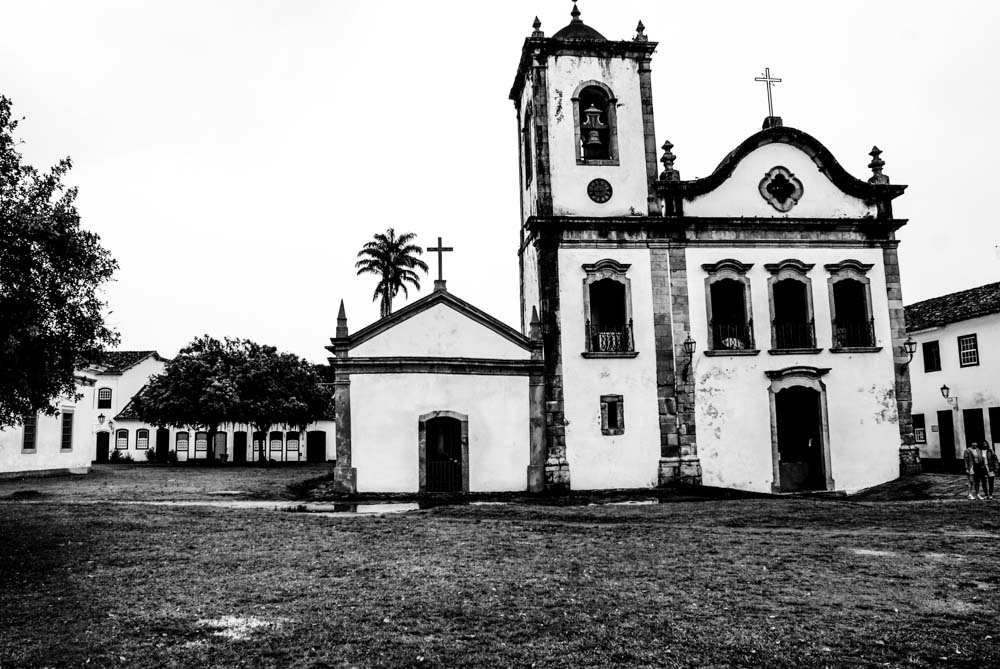
OK, so I'll be honest. I really love Paratay. I spent a few weeks there a couple of years ago on a yoga, hiking and kayaking retreat (for the record, I suck at kayaking, big time) and couldn't help but be entranced by it's too cute to be true buildings.
Sure it's the third colonial-era town I've listed in this article as a Brazil landmark but when you visit, you'll understand why I couldn't leave it out.
Paratay is straight out of a postcard, but a postcard with cool restaurants and a few lively bars.
If that's not enough – the surrounding forests and waters make for the perfect adventure playground. Just don't blame me if you don't want to leave.
So… What is the Most Famous Landmark in Brazil?
The most famous landmark in Brazil is the Christ the Redeemer statue in Rio de Janeiro. It's a tough decision but it's such an iconic image of Brazil that it has to have the title.
Don't Miss These Top Brazil Experiences
Stay
Check accommodation prices for your stay with Tripadvisor – the price comparison engine that finds you the best price for your trip.
Get Your Guidebook
I've travelled with several guidebooks during my time in Brazil and would recommend the Rough Guide to Brazil or Lonely Planet guide to Brazil every time.
Booking your travels? Check out my recommended resources page to help you plan your trip.
Love this? Save and share on Pinterest.


Source: https://www.thediscoveriesof.com/famous-landmarks-in-brazil/
0 Response to "Brazil Landmarks Drawing Brazil Christ Drawing Easy"
Post a Comment